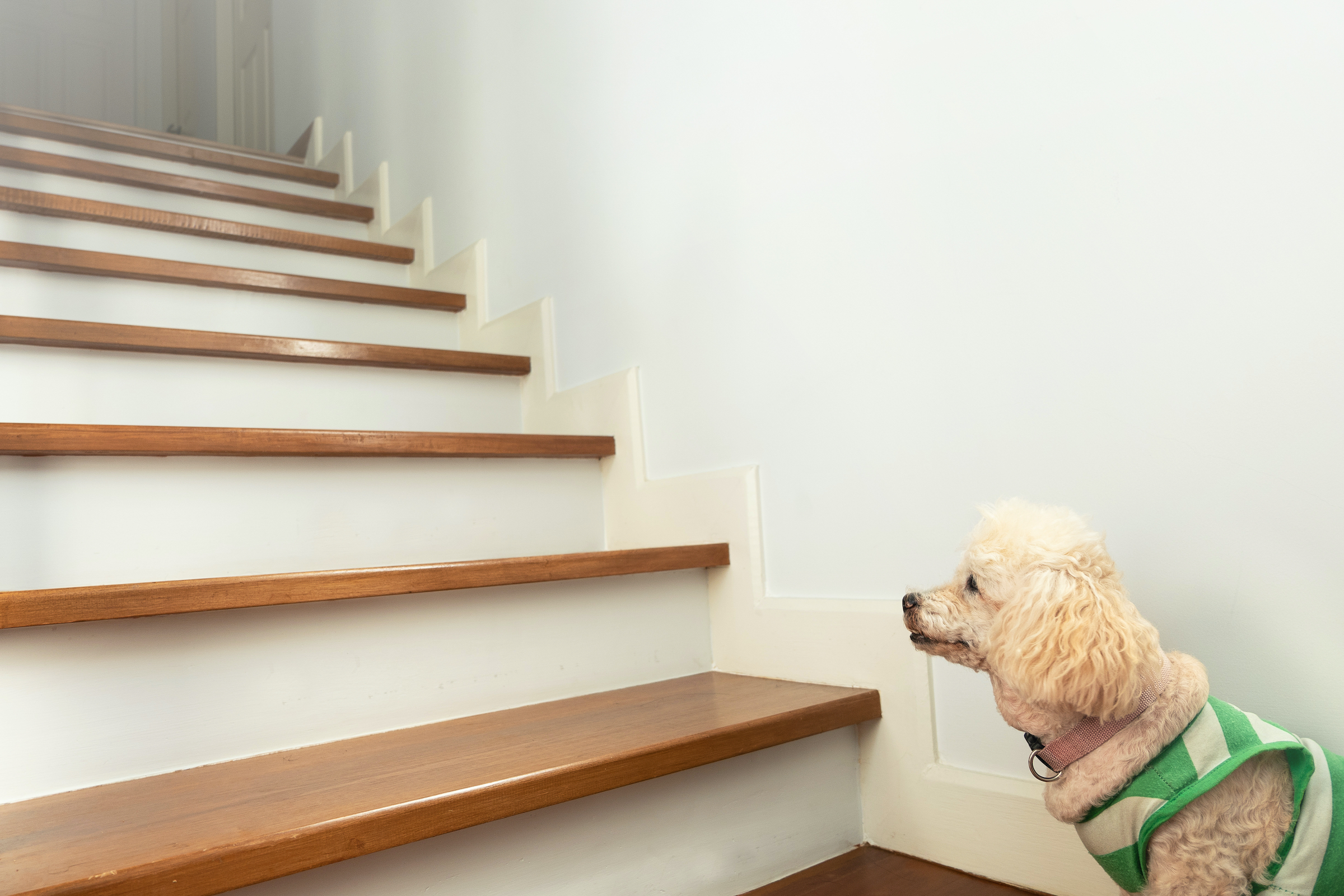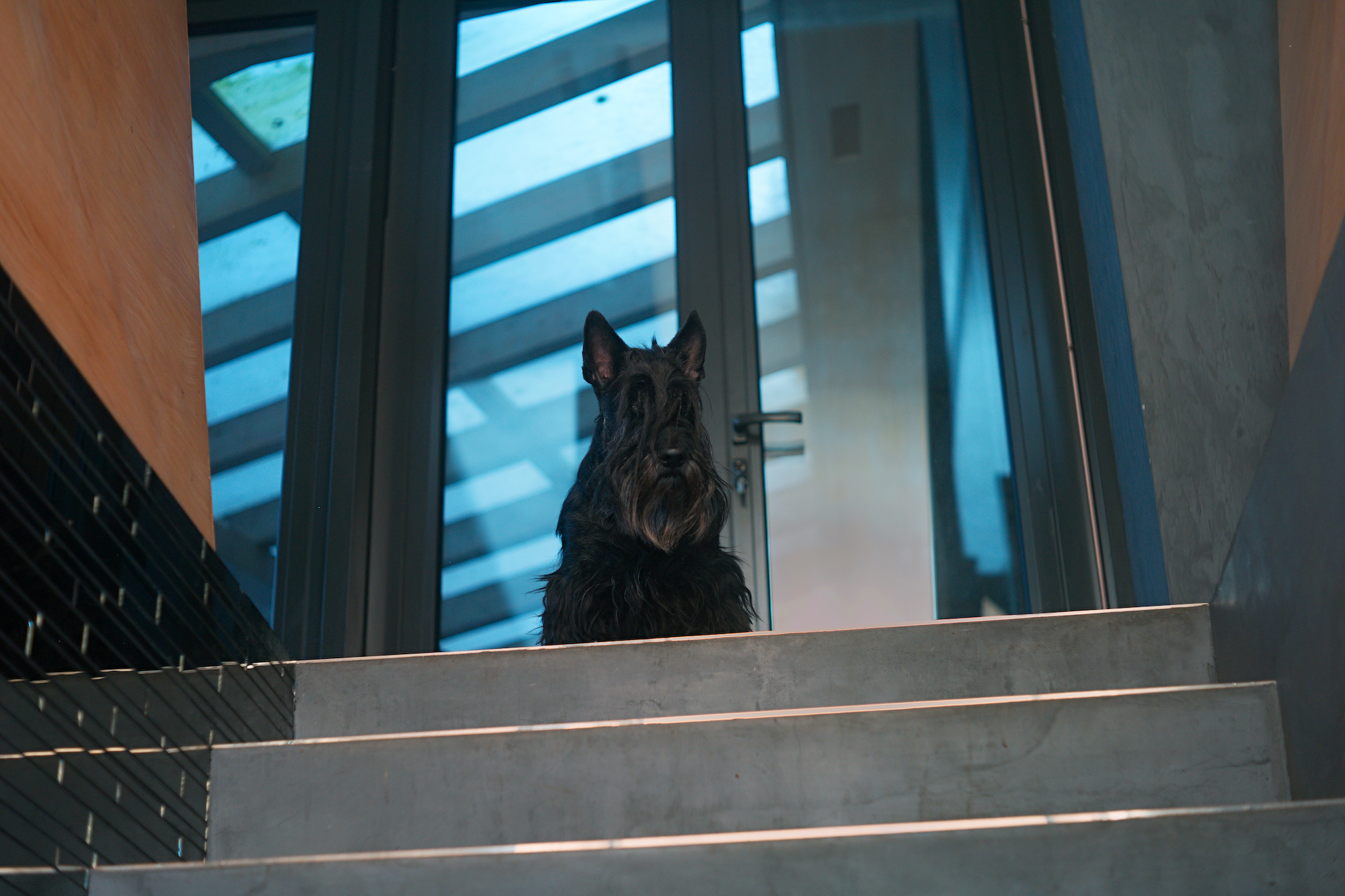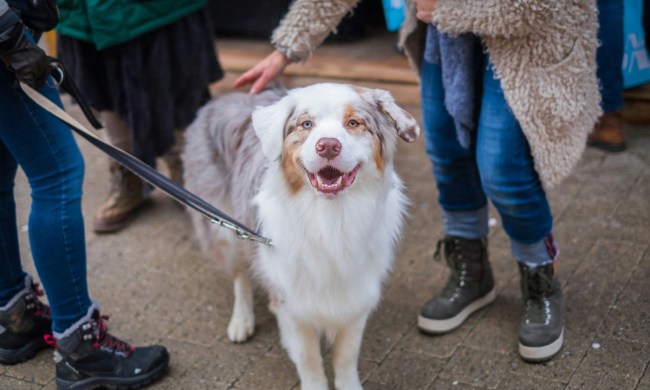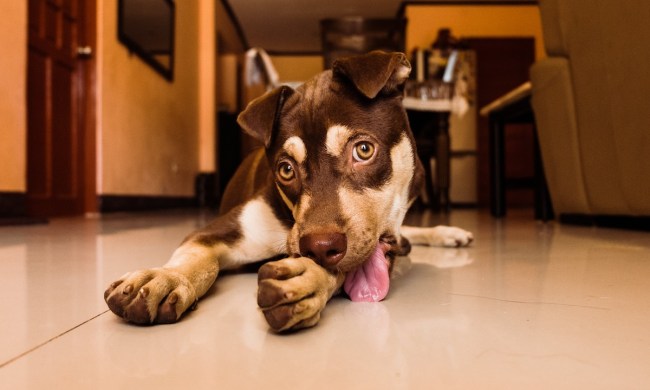It’s easy to see why a puppy might be afraid of the big bad staircase when they’ve never seen one before, but why would an older dog be afraid of stairs?
There are many reasons — some you wouldn’t even think to consider — as to why the steps are suddenly inaccessible. Luckily, there’s a lot you can do to help if your dog is suddenly afraid of the stairs, from special harnesses to revisiting some of the training basics. Of course, make sure to eliminate the possibility of injury or a medical issue before you start taking on the steps again, but that’s why your vet is here to help! Remember, you’re never alone when it comes to caring for your pet. You got this!
Fear of falling or consequences
Just like people, dogs are learning every day. A scary event like taking a tumble down the stairs, or even being punished for using stairs, can be enough to deter your pet from trying again. Remember, it’s always possible that something happened while you weren’t around, so it’s important to be mindful of your pup’s behavior even if you can’t think of any incident.
Of course, it’s essential to rule out injury or cognitive issues, so a trip to the vet should be scheduled. Anxiety and fear can develop out of an endless number of situations, and your vet can help you get to the bottom of it.
If you suspect that fear is behind your dog’s hesitation, help him out with a little stress-free practice. Find a place with just one step for your pup to get the hang of, then use his favorite reward to coax him forward until one paw steps up. Don’t forget to praise him!
Once he has the hang of this, move on to putting both paws on the platform for a treat. Using baby steps like this will help your dog build confidence so that before you know it, a whole set of stairs will feel like only one.
Your training may need to take a detour when it’s time to tackle the real stairs. If your dog shows hesitation in approaching the staircase, use the very same strategy with his treat to help him make positive associations with his fear.

Vision loss
Dogs who take on the stairs like nobody’s business may suddenly hesitate if their vision starts to change. If you couldn’t quite see where your next step will be, you’d be cautious, too! Although vision-impaired pups can learn to navigate familiar environments through their other senses (including memory), fear, confusion, and failure to navigate obstacles can all be signs of a change in vision.
Vision changes — especially new and unexpected ones — should be reported to and evaluated by a veterinarian. They can help guide you toward the best course of action, though you have a few ways to make your fur baby’s life easier while he gets used to his new way of living:
- Limit his space to one story, eliminating the need for stairs.
- Block off stairs at the top and bottom for safety.
- Use tactile clues like a carpet or stair runner so your dog will know when he’s approaching the stairs.
Pain or discomfort
Large breeds or senior pups may begin avoiding stairs or jumping down from cars or couches as they develop arthritis or other aches and pains. Your veterinarian will be able to help pinpoint exactly what’s going on and what you can do to keep your beloved buddy comfortable and safe.
If stairs are unavoidable in your home, you can make them easier for your pup by installing carpeting or another textured, nonslip surface. Using a handicap support harness will keep the extra pressure off your dog’s joints as he ascends and descends the stairs — with your help, of course.

Your dog’s nails are too long
Another surprising reason your dog may not be comfortable on the stairs is the length of his nails. When a pup’s nails are too long, they risk either breaking a nail or slipping on the stairs.
Long nails are easy to get caught in carpeting or between wood panels, especially if the edge is chipped or brittle. Just like when a person breaks a nail, it can be painful! When a dog’s nails are too long, it also makes it difficult for their paw pads to get a good grip on stairs (especially metal or wooden ones). In extreme cases, it can prevent them from even placing their paws on the stair correctly!
Luckily, a quick and safe nail trim will do the trick. Many groomers and vets offer nail-clipping services since it can be a bit of a hassle, though a pair of dog nail clippers and some treats will often do just as well.
Whatever the reason may be, helping your dog conquer his fear of the stairs is absolutely doable. It’ll take some time to understand where your pup’s hesitation comes from, but once you do, it’s so much easier (and helpful!) to tackle the root of the issue. There may be ups and downs, so to speak, but it’ll be so worth it for both of you in the end.



